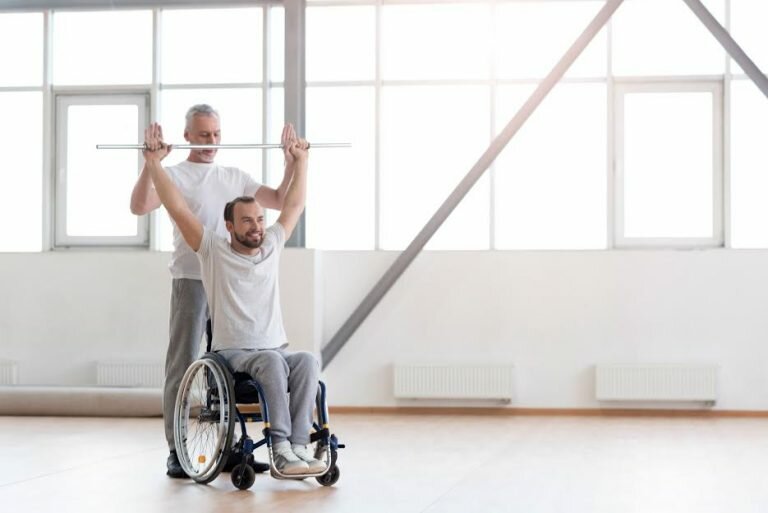Exercising with a Brain Injury
By Brooke Fletcher
A brain injury by definition is any damage to the brain after birth. This may be caused by trauma, stroke, alcohol or substance abuse to name a few.
This damage to the brain can affect individuals cognitively, physically or their independent functioning. The extent of the damage will vary depending on how the injury was acquired and location of the damage. Some of the disabilities experienced can be easily identified while others affecting emotions or cognition may be harder to recognise.
If specific barriers are not addressed with individuals to get them moving and exercising, there is a greater risk of developing secondary chronic health conditions as a result of inactivity.
These barriers can include anything from a lack of interest or time, or more specific barriers such as feeling self-conscious, not being aware of the benefits of exercise, fatigue, decreased mobility, muscle strength or balance and/or lack of knowledge from the trainer regarding patient abilities.

There are many benefits of exercise specifically related to those who have an acquired brain injury. Being physically active will not only help improve physical ailments, it can also help with mental health, cognitive function and social interaction. Exercise also helps improve learning, attainment and processing skills and programs can be tailored depending on the level necessary.
Being active can also help with fatigue, however fatigue can also be a barrier to exercise. It is therefore important to be guided in how to overcome this issue and be dose dependent for each individual to assess how much exercise can be tolerated.
The physical activity guidelines for those with brain injuries don’t differ too far away from the general population guidelines, as always though each individual will need to have their own assessment and exercise programs tailored accordingly. Overall, the guidelines encourage some form of exercise on 3-5 days of the week.
Exercise programs managed by an Exercise Physiologist will always take into consideration a number of factors including physical limitations or cognitive impairments. The program should consist of a combination of strength, cardiovascular, balance and mobility exercises. The mode of each of these and the breakdown of each will again be individual depending on the personal goals and functional ability.

Physical inactivity has been identified as one of the leading causes in mortality globally, which is why it is important to encourage physical activity no matter what limitations a person might have. Depending on the severity of the brain injury, an Exercise Physiologist can help to work with the limitations and to create a program to reap the most benefits exercise can offer for that individual.
At Allied Fitness Australia we currently do a lot of work with the NDIS and see a lot of clients with Acquired Brain Injuries. We work closely with support coordinators, family members and the clients to help reach their goals including increasing ability with activities of daily living as well as addressing other co-morbidities. For those who are unable to reach our facilities we also offer home visits.
If you do have funding with the NDIS you can access Exercise Physiology services under both the improved health and wellbeing and improved daily living categories and our dieticians can be accessed under improved health and wellbeing. If you are self-managed, Agency managed or Plan managed we work with the nominated providers in arranging service agreements through to the delivery of services.
If you would like more information on how we can help you or if you are unsure on your funding or eligibility please get in touch and organise a complimentary consultation with one of our Exercise Physiologists or dieticians today.
Brooke Fletcher
Accredited Exercise Physiologist
